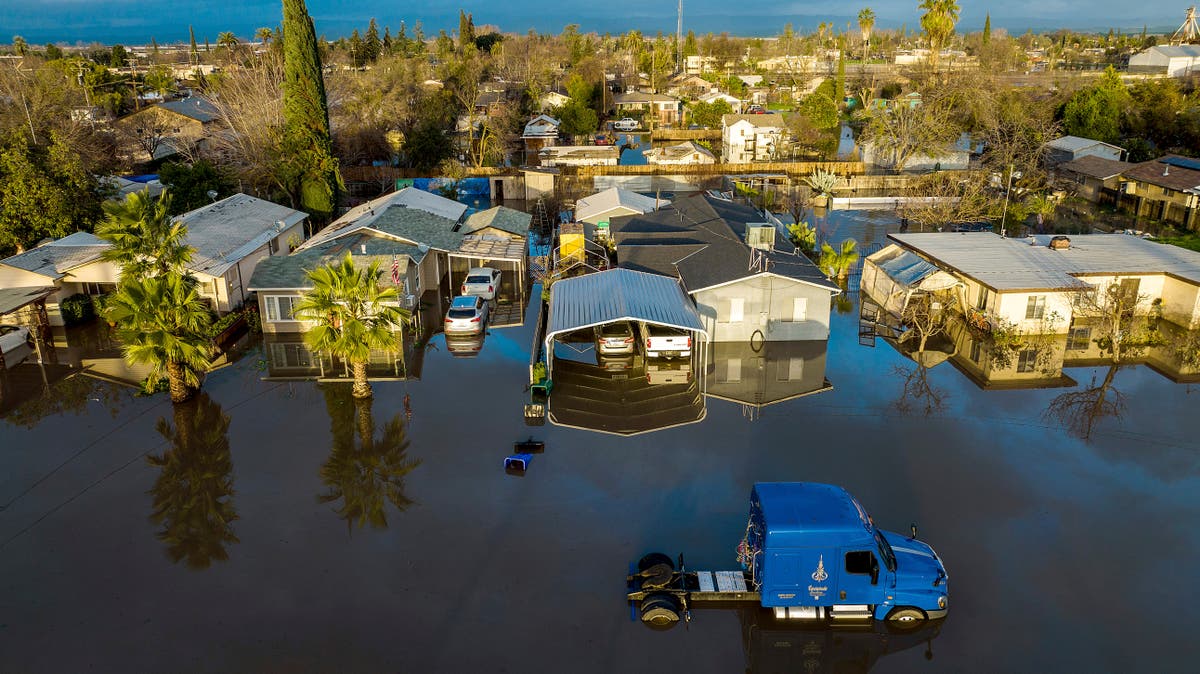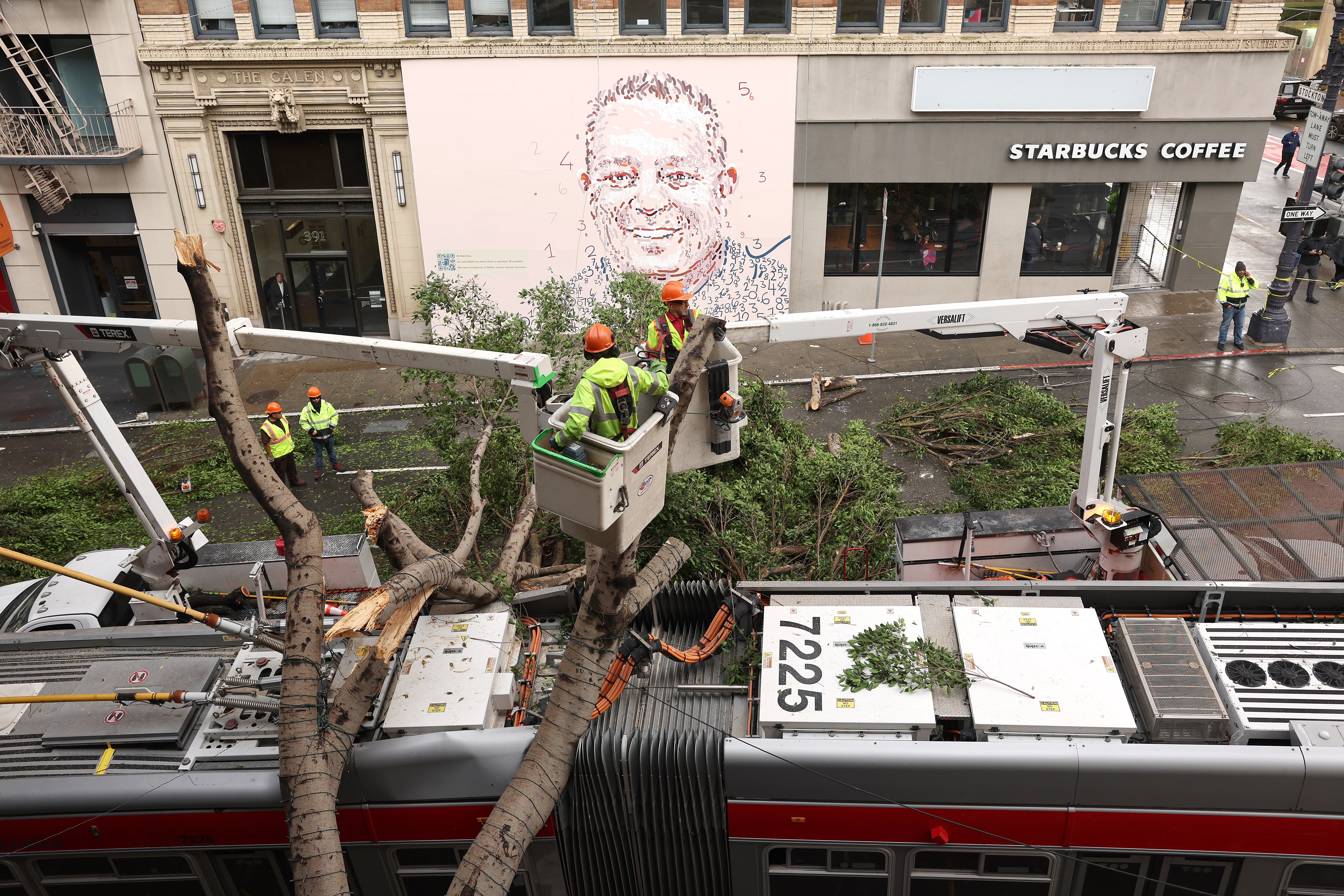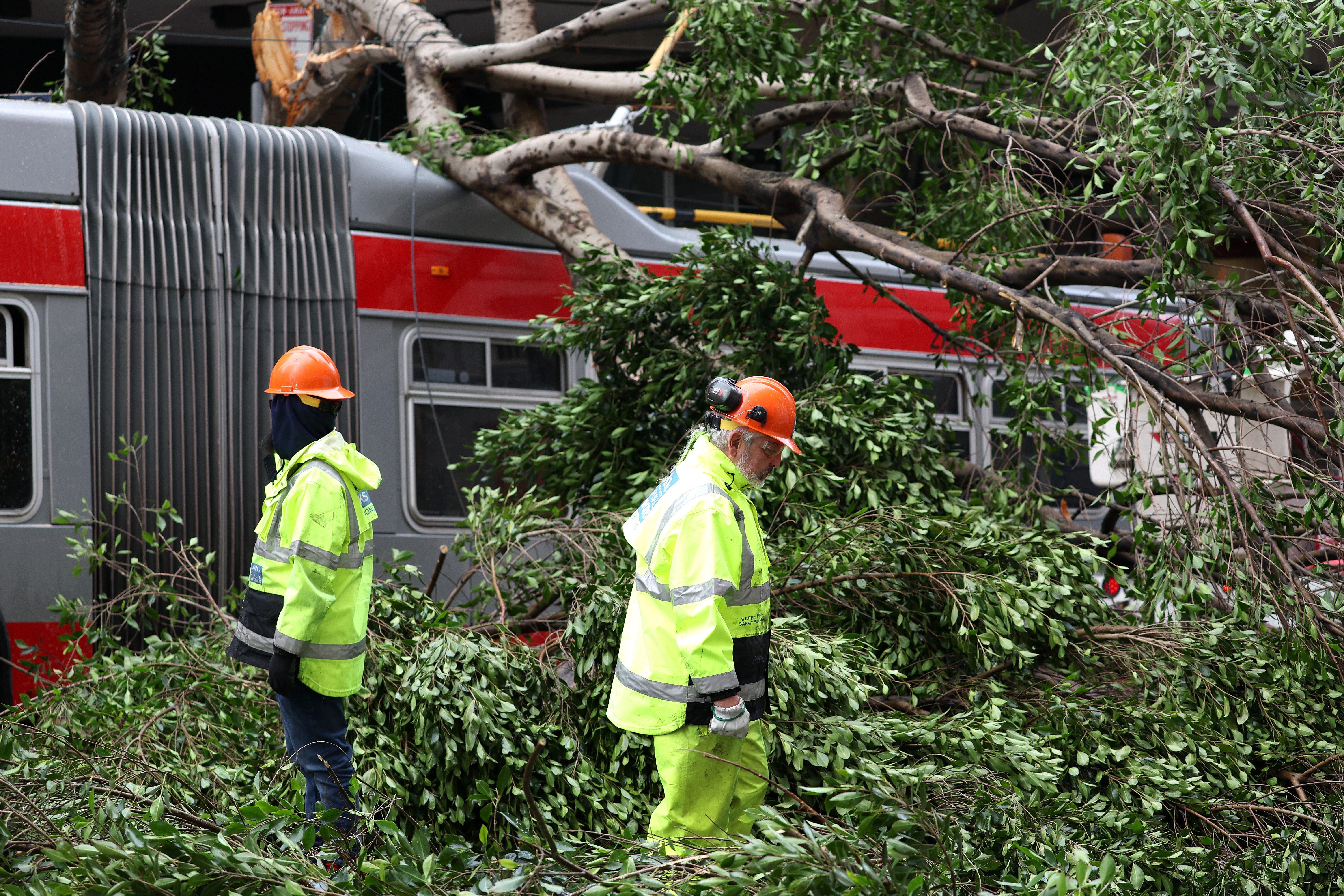California flooding: More storms forecast for weekend as experts warn heavy rain won’t fix drought
Death toll likely to rise in California as deluge and flash floods set to continue
Your support helps us to tell the story
From reproductive rights to climate change to Big Tech, The Independent is on the ground when the story is developing. Whether it's investigating the financials of Elon Musk's pro-Trump PAC or producing our latest documentary, 'The A Word', which shines a light on the American women fighting for reproductive rights, we know how important it is to parse out the facts from the messaging.
At such a critical moment in US history, we need reporters on the ground. Your donation allows us to keep sending journalists to speak to both sides of the story.
The Independent is trusted by Americans across the entire political spectrum. And unlike many other quality news outlets, we choose not to lock Americans out of our reporting and analysis with paywalls. We believe quality journalism should be available to everyone, paid for by those who can afford it.
Your support makes all the difference.California is bracing for more extreme weather this weekend, when two more storms barrel into the state on Friday and over the weekend.
The National Weather Service is forecasting heavy rain and flooding in the northern parts of the state on Saturday and into early Sunday morning, urging residents late on Thursday to “stay weather aware and prepare now”.
Since the start of the year, California has been hammered by a succession of storms with northwestern and central California already soaked by between 10 and 20 inches in the last two weeks alone.
While the heavy rain has started to raise reservoir levels, experts say it will take far more to reverse the effects of years of drought.
At least 18 people have now died in incidents linked to the extreme weather with the body of a 43-year-old woman discovered in a submerged vehicle in Sonoma County on Wednesday.
Near the city of Paso Robles, five-year-old Kyle Doan, swept away in the floodwaters when he and his mother Lindsey Doan got stuck in their car, is still missing.
Kyle’s father said that his wife unbuckled their son and the pair climbed out of the sinking car when it got stuck.
“He was calm. He was trying to say, ‘Stay calm, Mom,” he said. “She was doing her best.”
Woman’s body found in submerged car in Sonoma County
At least 18 people have now died in incidents linked to the extreme weather with the body of a 43-year-old woman discovered in a submerged vehicle in Sonoma County.
The victim Daphne Fontino had made a final desperate 911 call as her car became trapped in the floodwaters one day earlier.
The Sonoma County Sheriff’s Office said that search and rescue teams made the grim discovery along the 6000 block of Trenton-Healdsburg Road, Forestville, on Wednesday morning.
“Our deepest condolences to her family and friends,” the department said in a statement.
Gavin Newsom hints at link between floods and the climate crisis
During a visit to badly-impacted Santa Cruz county on Tuesday, Governor Gavin Newsom hinted at a link between California’s extreme weather and the climate crisis.
“The dries are getting a lot drier the last three years, and the wets are getting a lot wetter. This weather whiplash — is that the new reality?” he said, according to NBC News.
California has been in a state of “megadrought” for the past two decades, intensified by the impacts of global heating, according to UCLA research last year.
The study also found that it could take several years of high precipitation to overcome the mega-drought.
“It’s extremely unlikely that this drought can be ended in one wet year,” UCLA geographer Park Williams said at the time.
Watch: Terrifying moment mother and daughter rescued from sinkhole
Terrifying footage has captured the moment a mother and daughter had to be rescued from a sinkhole in Chatsworth, Los Angeles.
Intense flooding caused a sinkhole to open up on Monday night, swallowing two cars.
A mother and daughter were pulled to safety from an SUV.
Watch below:
ICYMI: NWS confirms tornado struck early Tuesday in northern San Joaquin Valley
The National Weather Service in Sacramento confirmed on Wednesday that destruction in Calaveras County early on Tuesday morning was caused by a small tornado.
An EF1 tornado occurred at around 4.10am local time, touching down near a small reservoir. Though classified as “weak” still produced 90mph winds and caused “extensive tree damage to white oak and pines trees”, according to a press release from NWS.
The tornado is just one small part of the severe weather that has lashed California for much of this month.
On the same morning as the tornado struck, severe thunderstorms swept through the San Joaquin Valley with winds strong enough to pick up a large horse barn near Oakdale in Stanislaus County and drag it over a five-foot fence. Neighbouring properties had minor roof damage and wind speeds are thought to have peaked at 75mph.
The NWS says that a warning was sent out to residents with a 17-minute lead time advising that straight-line winds and tornadoes were possible from the severe thunderstorms in the area.
Drenching California storms put dent in drought
Atmospheric rivers pounding California since late last year have coated mountains with a full winter’s worth of snow and begun raising reservoir levels — but experts say it will take much more precipitation to reverse the effects of years of drought.
The US Drought Monitor’s weekly update released on Thursday showed that “extreme” drought has been virtually eliminated a week after the worst category — “exceptional” — was washed off the map. Two weeks ago extreme drought covered 35% of California.
Read on:

Series of drenching California storms put dent in drought
Atmospheric rivers pounding California since late last year have coated mountains with a full winter’s worth of snow and begun raising reservoir levels but experts say it will take much more to precipitation to reverse the effects of years of drought
What next for California? Storms eight and nine...
The plume of moisture lurking off the northern coast of California stretched all the way over the Pacific to Hawaii, making the atmospheric river “a true Pineapple Express,” the National Weather Service said.
Michael Anderson, climatologist with the Department of Water Resources, said California has been hit by seven storms since the end of December and two more slightly weaker ones were expected before the state gets a reprieve by the end of next week.
“The challenge is they’re storms eight and nine in the sequence and the cumulative effect is likely to cause impacts larger than the storms themselves might cause,” Anderson said.
AP
Cost of storms estimated to exceed $1bn
More than half of California’s 58 counties were declared disaster areas and repairing the damage may cost more than $1bn, Brian Ferguson, spokesperson for the state Office of Emergency Services told the Associated Press.
His estimate was mirrored by that of a climate expert with the National Oceanic and Atmospheric Administration.
The Los Angeles Times reported:
The total is a reflection of “physical damage to homes, businesses, and municipal properties,” said Adam Smith, an applied climatologist and disaster expert with the National Oceanic and Atmospheric Administration.
Smith is the lead researcher for NOAA’s “US Billion-Dollar Weather and Climate Disasters” report, which catalogs 18 such disasters from 2022. He has reason to believe that the atmospheric river-producing storms in California may join this year’s list.
“Clearly, when everything is said and done after weeks of atmospheric rivers,” Smith said, he “would not be surprised if this was the first billion-dollar event of 2023.”
Other major costs could include lost productivity for individuals and businesses due to evacuation, agricultural damage from flooding and damage to boats and piers along the coast, Smith said.
An often-overlooked cost associated with disasters is damage to public infrastructure, he noted. Damage to roads, bridges, levees and electrical systems would be totted up by NOAA but disregarded by the public as they assess their personal losses, he said.
Montecito residents allowed to return: ‘I can’t imagine living anywhere else'
Crews worked to reopen major highways that were closed by rockslides, swamped by flooding or smothered with mud while more than 10,000 people who were ordered out of seaside towns on the central coast were allowed to return home.
That included Montecito, a wealthy Santa Barbara County community that is home to Prince Harry and other celebrities where 23 people died and more than 100 homes were destroyed in a mudslide five years ago.
This week’s storm brought back harrowing memories for Montecito resident Susanne Tobey, who was rescued when the 2018 mudslide roared through her community.
Like five years ago, when the community was asked to evacuate on Monday, the only highway out was closed, she said. “It was terrifying,” she said of the latest storm. “I don’t think I slept the whole night and the rain was ... you just can’t imagine. It’s like just living in a waterfall.” But even with yet another storm on its way, Tobey said she plans to stay put again.
She said the community has made improvements that she hopes will prevent a similar tragedy, including adding steel nets to catch falling boulders, and debris basins to catch the deluge before it overtakes the hillsides that plunge into the Pacific Ocean.
“You have to be brave to live in California,” she said, adding: “I can’t imagine living anywhere else.”
AP
Racing to clear debris before next band of storms
In San Francisco, a tree fell on a commuter bus on Tuesday without causing injuries and lightning struck the city’s iconic Transamerica Pyramid building without damage. In South San Francisco, high winds also ripped away part of the roof on a large apartment building.


Crews wielding chainsaws were working around the clock to clear all the downed trees across the Bay Area. Arborist Remy Hummer said he expected many more trees to fall as rains returned.
“The soil is basically like a sponge, and at some point he can’t hold any more water and trees become essentially almost buoyant in the soil and very loose. And then you get the combinations of high winds and that’s when you get tree failures, meaning full trees uprooting and falling over,” he said.







Join our commenting forum
Join thought-provoking conversations, follow other Independent readers and see their replies
Comments